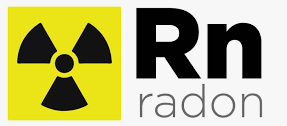What is Radon, where does it come from, what’s its purpose, and how is it harmful?
When speaking to the general public, most people are not familiar with radon gas. Sure, it is associated with pesticides or with radiation, as it sounds similar. Although, radon is actually a naturally occurring gas that can be seeping out from underneath your home or business. As a radioactive gas, it can cause long term health effects, such as lung cancer.

Radon gas is an odorless, colorless, and tasteless gas. It is not particularly dangerous when breathing it outdoors. The air outside helps the naturally occurring gas disperse on its own. The problem is when radon gas gets trapped indoors. This is when it becomes deadly. Similar to other viruses lingering indoors for long periods of time, the probability is higher as the air circulates less.
When you buy a new home, rent an apartment, or have a new lease on an office, it is vital, and sometimes mandatory, to get a safety inspection. Does that include an air quality test? It should. By hiring our Ohio experts, we can test out the air for radon and other harmful gasses or chemicals. When you breathe in radon over time, it becomes dangerous. So toxic that it can cause lung cancer. In fact, according to the EPA, radon gas is the second leading cause of lung cancer. On average, 1 in 15 homes contains radon above the EPA’s recommended limit.
If you think you need radon mitigation or a test for your apartment’s radon levels, call the experts in Dayton, Ohio today. Our service area includes Butler County, Warren County, residential areas in Mason, Lebanon, Middletown, West Chester, Liberty Township, and Dayton’s regions. You and your loved ones deserve to sleep with peace of mind. Call us to schedule an appointment: 937-433-5202
Photo Kindly by Photo by Danny Feng on Unsplash.


